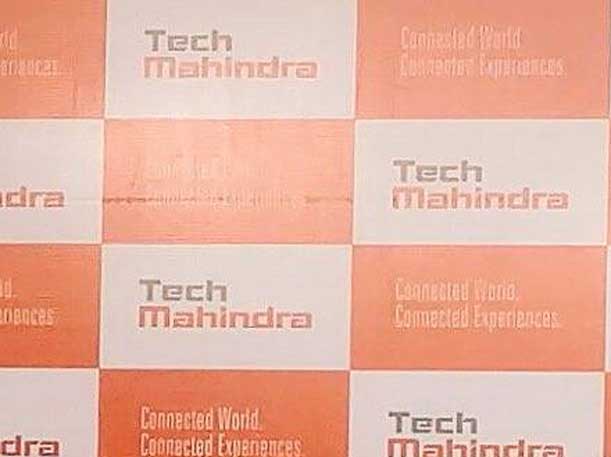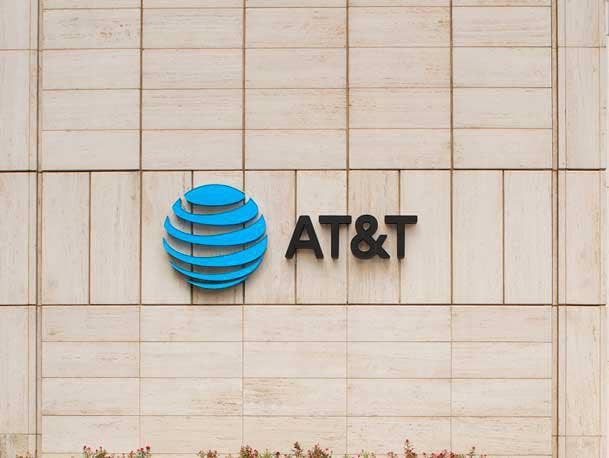Let’s Get ‘Phygital’: Tech Mahindra’s Future Rides On Combining Physical, Digital Worlds
‘Because of our manufacturing heritage, we can touch the physical world and the digital world and bring them together in what I call ‘phygital.’ Very few companies can do that. Many of our competitors are IT companies at the end of the day. They don’t understand how technology is brought into life and how hardware and software talks,’ says Lakshmanan Chidambaram, president of the Americas Enterprise Business of Tech Mahindra.

Lakshmanan Chidambaram
Operating In The “Magical Intersection” of IT, Business, Engineering, And Networks
Tech Mahindra, the Pune, India-based multinational IT services and consulting company with a large presence in the U.S., is looking to set itself apart from both its India-based and non-India-based service provider competition.
Lakshmanan Chidambaram, president of the Americas Enterprise Business of Tech Mahindra, told CRN in an exclusive meeting that the combination of his company’s experience in both the physical manufacturing world via its parent company Mahindra Group and in the digital world thanks to its own intellectual property and several key acquisitions is driving the company’s growth.
Chidambaram, who is also known as “CTL,” uses the word “phygital” to explain the combination.
[Related: Infosys President Mohit Joshi Exits For Tech Mahindra CEO Gig]
“Because of our manufacturing heritage, we can touch the physical world and the digital world and bring them together in what I call ‘phygital,’” he said. “Very few companies can do that. Many of our competitors are IT companies at the end of the day. They don’t understand how technology is brought into life and how hardware and software talks.”
Tech Mahindra is a $6.5 billion-plus revenue company with its hands in a wide range of industries including telecom, financial, retail, oil and gas, and automotive, where it is able to use its “phygital” capabilities to offer customers IT solutions, Chidambaram said.
For instance, Tech Mahindra and the Mahindra Group are collaborating on a solution called Factory of Future, which uses the parent company’s automotive manufacturing skills and Tech Mahindra’s digital skills to make auto manufacturing more safe and productive, he said.
“We want to create a digital platform out of this and offer the service to our customers globally,” he said. “This will be hosted on a multi-tenant cloud in a very state of the art manner. And we believe that with our practical experience on the ground and our proven track record, we’ll be able to ramp this up significantly.”
Chidambaram also talked about the reason why India is such an important part of the worldwide IT services business, and the importance of growing collaboration between the U.S. and India in this space.
“India is the largest democracy in the world,” he said. “The U.S. and India combined can lift the over-dependence of U.S. supply chains on China to other parts of the world. Not just to India—India is a big destination—but to India, Mexico, Vietnam, Malaysia. So there’s lots of areas of collaboration.”
Here’s more of CRN’s conversation with Chidambaram:

How do you describe Tech Mahindra?
We are a global services company that operates at the intersection where information technology, business process, core engineering, and networks meet. That’s a magical intersection that we operate in. This year, we’ll close at about $6.5 billion-plus in revenue, with over 148,000 people worldwide. We operate out of 105 countries. And in terms of revenue, it’s well balanced, with 52 percent of our revenue in the Americas, largely U.S.A. and Canada. About 28 or 29 percent from Europe, continental Europe and UK. And the rest from the rest of the world. …
We’re highly verticalized because ultimately, you need to understand the customers’ domains extremely well to help them win in the marketplace. The way we look at it is, one, we need to understand the latest digital technologies including artificial intelligence, augmented reality, virtual reality, extreme automation, business process automation, a whole lot of new technologies, as well as the technologies we’ve always operated. And, two, it’s understanding the domain. And then bring them together to create solutions to help our customers win in the marketplace.
What are Tech Mahindra’s strategic priorities? What are some things that you want to do to help improve your business?
We are really focusing on technology and domain, the combination of which is our key play. We want to be able to come up with solutions that can help our customers win in the marketplace.
We are working on a solution called Factory of Future, a collaboration with our parent group, The Mahindra Group. They are a $24-billion conglomerate. One part of the group is the School of Engineering and Manufacturing, which makes two-wheelers, four-wheelers, six-wheelers, eight-wheelers, and small aircraft, and is the largest tractor manufacturer in the world. So we get a lot of manufacturing heritage from them. Their largest factory has 12,000 people who come into work every day. We’ve been working in this plant to make it more safe, more intuitive and productive. And in the last two years, the digital technologies we have put into play means they are using 30 percent less energy to manufacture an SUV than they did three years ago. So we want to create a digital platform out of this and offer the service to our customers globally. This will be hosted on a multi-tenant cloud in a very state of the art manner. And we believe that with our practical experience on the ground and our proven track record, we’ll be able to ramp this up significantly.
Second, we’re focusing on engineering. Because of our manufacturing heritage, we can touch the physical world and the digital world and bring them together in what I call ‘phygital.’ Very few companies can do that. Many of our competitors are IT companies at the end of the day. They don’t understand how technology is brought into life and how hardware and software talks. For example, GE Appliances has been a customer of ours for 24 years. Every GE appliance that is shipped, the engineering behind it comes from Tech Mahindra. Going forward, these cooking ranges and refrigerators are talking. They’re IoT-enabled. So you have to build a digital platform, and all of them have to behave like a Tesla car. It’s a huge opportunity making that happen. So we have to be involved deeply in physical, digital, ‘phygital,’ and making all of that work.
Finally, we are investing heavily in artificial intelligence, generative AI, and how to use that to intelligently automate processes to make our customers more productive and successful. That includes adopting the latest technologies to help our customers win in the marketplace. An example that was something we did was Ford. Let’s say you buy a car, and it develops a problem. You take it to the mechanic who solves the problem. Maybe he replaces a defective part. So that’s a happy story. Now, in 5 percent of the cases, the problem is complex. The dealer has to consult a subject matter expert from Ford who has to fly to the dealer place to repair it, or the car has to be shipped back. During the pandemic, that was not possible. So we designed a cool solution where the subject matter expert and the dealer mechanic both wear smart glasses to let subject matter experts sitting anywhere in the world guide the dealer remotely on how to repair the vehicle. It’s all hands-free, We’ve had 87 percent first-time problem resolution. We’ve now implemented it with 4,000 dealers globally. You will see us bringing more and more solutions like that to market. Now that solution, which was introduced for a car dealership, is being used by CPG companies.

What are some of your marquee customers or projects in the Americas?
Our largest vertical is servicing telecom companies. AT&T is our largest customer here. Almost any significant telco provider anywhere on the globe is our customer. So we have deep experience in the telco space. Then we have manufacturing. Automotive is our largest vertical here, followed by aerospace. We have a 26-year relationship with Ford, 17 years with Navistar, 17 years with Nissan in North America. We work with Paccar. So from a manufacturing perspective, we work on aerospace, defense, automotive, discrete manufacturing, and we have a specialized segment for heavy vehicles with Navistar and Paccar. And then we have one for specialty vehicles such as ambulances.
We are also in banking, financial services, insurance, retail, travel, logistics. All the big railroads are our customers including BNSF and Amtrak. We work with trucking companies and UPS, so supply chain and logistics companies is a big bet. Retail, CPG (consumer packaged goods), high tech, oil and gas, utilities, a fairly wide range of segments that we operate in. We deliver solutions for them across the globe. In the U.S., we have seven nearshore centers, with roughly 6,000 people in the U.S. and Canada.

Who would you consider to be Tech Mahindra’s primary competitors?
We have a wide range of competitors. On the multinational side, we compete with IBM, or from a services perspective, Accenture. We have a number of Indian competitors like Infosys and TCS (Tata Consultancy Services). And we have some smaller competitors. So it’s a wide range.
You mentioned a couple of large India-based companies. How have Indian services companies grown to be such a big part of the IT business worldwide?
There are a few things. One is the supply of talent. India recently surpassed China to become the most populous country in the world, and 60 percent of India’s population is under the age of, I would say, 30. So there’s a huge supply base of talent available. A huge number of engineers graduate every year. And the ability to absorb these engineers, train them, get them into the workforce, all that has become a very strong showcase from an India perspective. Number two, India is also vibrant in so many sectors: banking, financial services, retail, travel, logistics. And so the ability to attract a lot of people with functional experience, and lateral hiring of talent, is a very positive thing.
And third, we are continuously moving up the value chain. At some point in time, we got engineers to work on projects for Fortune 1000 clients. We did fixed price, then outcome-based pricing with risk-reward models. Now we’re designing products and platforms which automate particular business processes end-to-end and deliver huge savings and become a thought leadership type of business.
Overall, India is one of those rare places in the world which has not been affected by the pandemic. All these factors combined together, I think, has made India a very attractive destination from a growth perspective.
Are there any issues in India that could reduce that IT growth in the future?
I don’t think so, because IT is so important. We are not transporting anything via trucks from one point to another. With the product we develop, we hit enter and it flies through high-speed telco networks to our customers. And the pandemic taught us that we can work anywhere, anytime. So I don’t see any major limiting factors. India’s only minus could be the surrounding neighbors. There’s China and a hostile Pakistan. Those neighbors are a little more difficult than the neighbors the U.S. has. To be blunt, India has learned to manage these. And frankly, the U.S. is also realizing that China is now something that the U.S. has to worry about. So now there’s a lot of collaboration between the U.S. and India. India is the largest democracy in the world. The U.S. and India combined can lift the over-dependence of U.S. supply chains on China to other parts of the world. Not just to India—India is a big destination—but to India, Mexico, Vietnam, Malaysia. So there’s lots of areas of collaboration. I don’t see any serious threat from an India perspective.
How long has Tech Mahindra been in the IT space?
We’ve been in this field for almost 20 years. It started as a joint venture between Mahindra & Mahindra and British Telecom. It was called MBT those days, Mahindra British Telecom. The two companies’ chairmen knew each other, and said, ‘Let’s do something.’ And they started this company. And they met two years later, and found out there was only one client with $150 million in revenues, all from BT. And they said, ‘That’s not why we found the company. We should do something with it, or we should shut it down.’ So they brought in a management team headed by our current CEO, CP Gurnani. The company grew by leaps and bounds to a revenue of $1.3 billion about 12 years ago. And at that time, we were among the top few service providers to telcos..
But then we realized that depending only on telcos is not good because if the telco industry got a cold, we’d get pneumonia. And so we decided we should expand into the other verticals that I described before: banking, financial services, retail, travel, CPG, manufacturing, all of that. And we knew we couldn’t do it organically. So we bought India’s fourth largest IT services company, a company called Satyam [Computer Services]. That company had deep experience in all the verticals. At that time, 12 years ago, Tech Mahindra had $1.3 billion revenue with 35,000 people. Satyam had $1.35 billion with 35,000 people. We merged these companies together, and Tech Mahindra now has close to $6.5 billion-plus revenue with 148,000 people.

In addition to Satyam, has Tech Mahindra done a lot of acquisitions?
Both organic and inorganic is very crucial to our growth. And we buy assets that can help us deliver more value to our customers. I’ll give you examples of assets that we acquired in the last couple of years. We acquired a company called Mad*Pow which does customer experience transformation and behavior change management. Remember, when you’re designing something new, you’re not designing in isolation. You’re getting into the shoes of the customer, reimagining their experiences, and then coming up with solutions that make it a frictionless experience. For example, we work with a large bank in the U.S., and that bank’s vision was anybody wanting million-dollar or more mortgage should do so sitting on the porch of their house without ever having to visit a branch. So Tech Mahindra’s customer experience team talked to potential customers and said, ‘How would you like an online experience to be?’ We gathered their answers and used them to design the system from the ground up. It’s born on the cloud, hosted on Azure. Long story short, you can fill a mortgage application in 40 minutes, and fund disbursement happens in four days, all on-line, end-to-end. During the pandemic, mortgage needs shot up by 387 percent. Brokers brought mortgages to banks, to Citibank, to JPMorgan, to Choice Bank, Citizens Bank, everybody. With our application, the bank gets its customer and keeps it. After they close it, they are able to cross sell and upsell services. So this is completely transformative.
We made another acquisition, an ad agency called Born that does content, creative, and ecommerce end-to-end. If you take sites like Philips, Cartier, Rolex watches, their end-to-end ecommerce is designed by and implemented end-to-end by us.
We bought 88-year-old iconic Italian design house Pininfarina. Every version of the Ferrari is designed by Pininfarina. So now they help us when we go to an automotive company starting with designing a vehicle, all the IT aspects behind it, implementing SAP, product maintenance, aftermarket, warranty, all of that. It gives us cover in the segment.
And we acquired DigitalOnUs, a native cloud, hybrid cloud company. We loved what they brought to the table in terms of cutting-edge cloud skills. They had delivery centers in Mexico. So now we have about 1,400 people in two centers in Mexico City and Aguascalientes. DigitalOnUs had another 600 people based out of Guadalajara, Monterrey, and Saltillo. So we now have a total of 2,000 people in five centers covering all of Mexico.